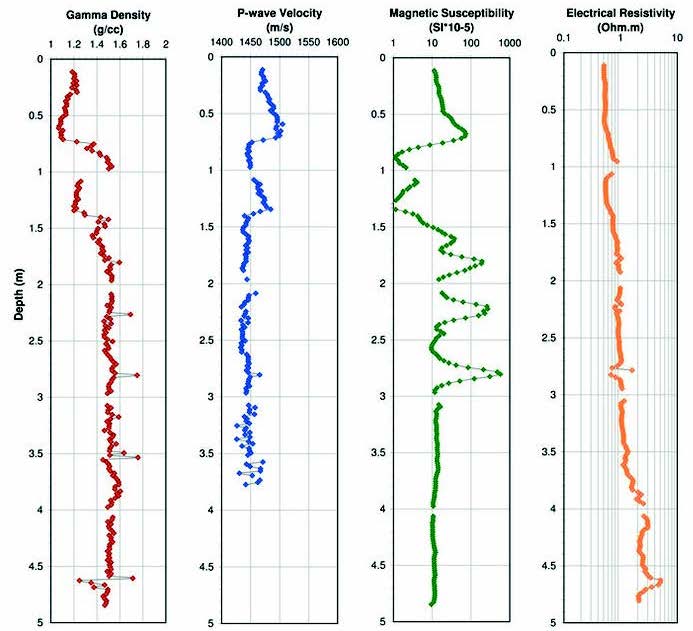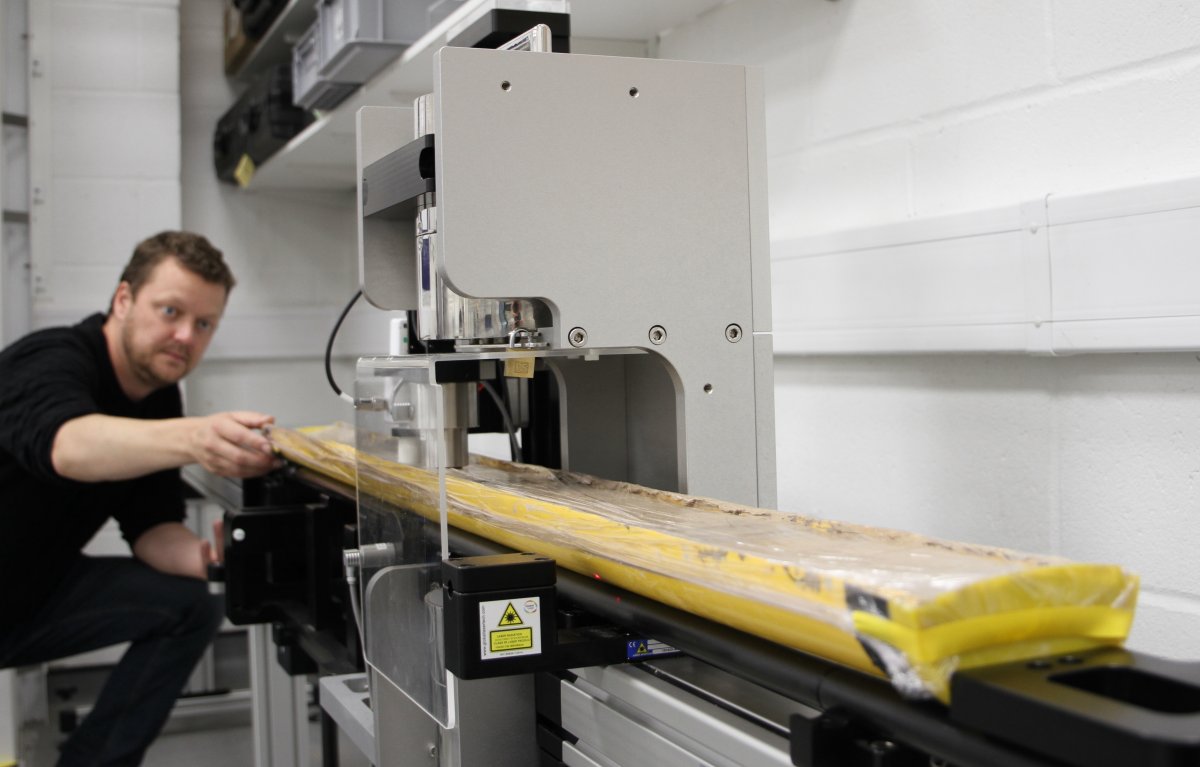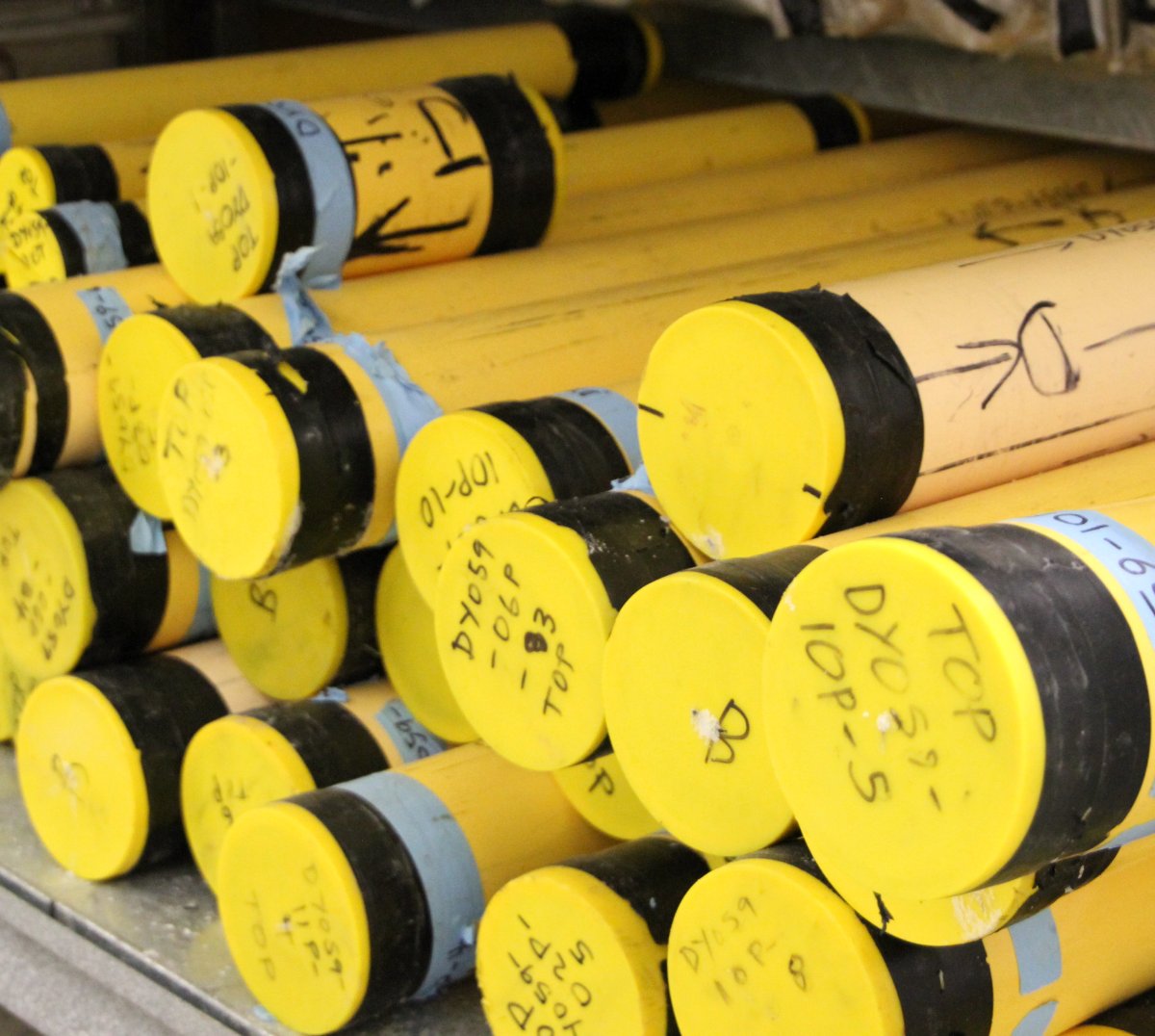The Instrument
The Geotek MSCL-S is fitted with four sensors:
- a P-wave velocity sensor
- a gamma-ray density (also known as bulk density) meter
- a magnetic susceptibility loop
- a non-contact resistivity sensor
These sensors produce a stream of measurements at a spatial resolution as low as a few millimetres, that can be used for their absolute values, or as proxies for changes in lithology, texture, and/or sedimentary origin.
Major benefits of analysing samples by MSCL-S:
- Quick – rapid physical property data
- Non-destructive – whole-round and split half-round core samples can be analyzed without damaging the sample
- Uniformity – the physical property data the MSCL-S generates are part of standard, world-wide applied core description methods
The rapidity and global uniformity of MSCL-S measurements have made this core logger one of the most ubiquitously used instruments in the Earth Sciences. All new core samples taken by NERC vessels are analysed for these physical properties.
Samples and Methods
The MSCL-S is designed for sediment core samples. Both whole-round and split half-round core samples can be fed through the core logger.
Samples successfully run on the MSCL-S:
- Marine and terrestrial sediment cores (whole-round and half-round)
- Rock cores (whole-round and half-round)
Sample preparation
No specific sample preparation is needed. Most often whole-round core samples are analysed using the MSCL-S, which means these analyses are done prior to core splitting.
Measurement procedure
A sample is placed at one end of the core logger and is then automatically fed through all the sensors. Measurement resolution can be set to the mm scale.
Data and Applications
The MSCL-S outputs gamma ray attenuation data, P-wave velocity data, magnetic susceptibility data, and electrical resistivity data. Gamma ray attenuation is a measurement of sediment bulk density, P-wave velocity is a measure of the speed with which low-frequency soundwaves travel through the sample. Magnetic susceptibility measures the response of the sample to a magnetic field. Electrical resistivity quantifies the disruption of an electrical field when the sample passes through a loop.

Scientific Applications
The physical property data the MSCL-S yields allows for the following scientific applications:
- Stratigraphic correlation between cores
- Quantifying porosity, water content, and grain-size variations
- Seismic correlation and the construction of synthetic seismograms
- Assess overall core quality
- Identify cyclicity throughout a core
- Find event horizons, such as turbidites

